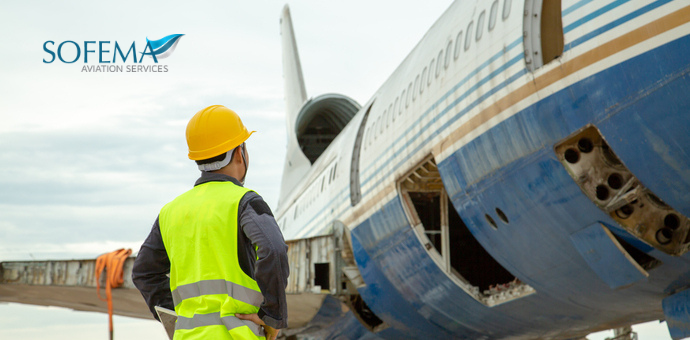Sofema Aviation Services (SAS) www.sassofia.com introduces EASA/FAA Aircraft Certification Crashworthiness and Survivability Considerations.
FAA or EASA airworthiness standards for the certification of aircraft are issued in accordance with ICAO annexes. The certification process is based on these airworthiness standards rather than directly on the ICAO International Standards.
ICAO Annex 8 is the most relevant to the scope of the design phase.
Technical Standards
The technical standards dealing with the certification of airplanes include requirements related to:
- Performance
- Flying qualities
- Structural design and construction
- Engine and propeller design and installation
- Systems and equipment design and installation
- Operating limitations
- General information to be provided in the airplane flight manual
- Crashworthiness of aircraft and cabin safety
- Operating environment
- Human factors and security in aircraft design
Crashworthiness
Crashworthiness can be defined as the ability of an aircraft and its internal systems to protect occupants from injury in the event of a crash.
Typical injuries arise from three distinct sources:
- Excessive acceleration forces
- Direct trauma from contact with injurious surfaces
- Exposure to environmental factors such as fire, smoke, water and chemicals resulting in bums, drowning or asphyxiation
Potential Mitigations consider the following:
- Strength of the container (cockpit and cabin)
- Effectiveness of seats and restraint systems
- Effectiveness of energy attenuation systems
- Any objects in the area of the occupant with potential to cause harm (for example Head Impact Criteria)
- Post-crash factors, including fire prevention and adequacy of escape routes
Injury in crashes may be classified as either:
- Traumatic injury – due to transfer of mechanical energy to an individual. (The most common form of injury seen in helicopter crashes.)
• Acceleration
• Contact
• Mixed - Environmental injury – caused by environmental factors such as water leading to drowning, heat leading to burns or fumes leading to asphyxiation. (Environmental injury is usually the predominant form of injury for crashes occurring in water or when a major post-crash fire occurs.)
• Fire
• Drowning
• Heat/dehydration
• Cold
• Chemical exposure (fuel)
Basic Principles of Crashworthy Design
The basic principles of crashworthiness design may be summarized by the acronym “CREEP” as follows:
- C – Container – Should possess sufficient strength to prevent intrusion of structure into occupied spaces during a survivable crash.
- R – Restraint – Seats, restraint systems and their attachments should have sufficient strength to retain all occupants for the maximum survivable crash pulse.
- E – Energy absorption – Locations, where vertical energy absorbing capability may be integrated into a helicopter design, include landing gear, floor structure and the seats.
- E – Environment (local) – Any object within the passenger space may be considered an injury hazard.
- P – Postcrash factors – Provide for the escape of occupants after the crash under a host of adverse conditions. Control or eliminate the hazard at the source or provide for more rapid egress, or a combination of both.
Next Steps
Sofema Aviation Services provides regulatory and vocational training related to Safety Investigations – Please see the following:
Aircraft Accident Investigation Process & Procedures – 3 Days
For further information please email office@sassofia.com
Tags:
Aircraft Accident Investigation, Aircraft Certification, Crashworthiness, EASA, FAA, Survivability, Technical Standards




